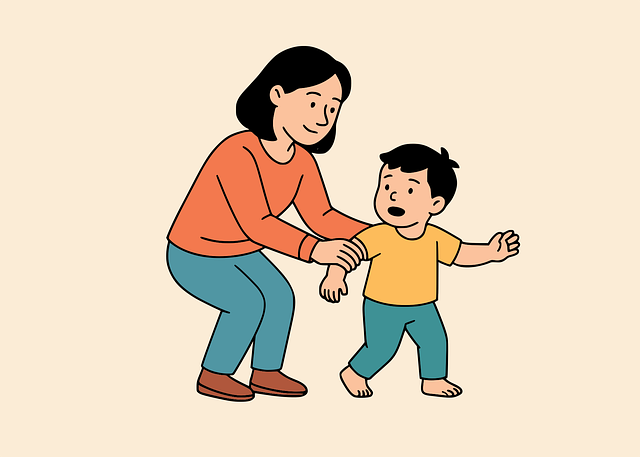Oregon's child welfare system benefits from robust advocacy efforts focused on protecting and supporting vulnerable children and families. These advocates raise awareness, push for policy changes, and improve access to quality education, healthcare, and safe living environments. Despite challenges like complex bureaucracy and long waiting times, their work has led to significant improvements, including increased funding, enhanced caregiver training, and stronger family support networks. By fostering community engagement, collaborations, and data-driven campaigns, advocacy groups empower parents and prioritize children's well-being, driving meaningful systemic reforms across Oregon.
Oregon’s child welfare system is a complex network aimed at protecting and nurturing vulnerable youth. This article explores the vital role of advocacy in ensuring the well-being of children across the state. From understanding the current system to examining successful advocacy initiatives, we delve into strategies to improve outcomes. We highlight challenges faced by advocates and emphasize the power of community engagement as a game-changer. By strengthening advocacy efforts in Oregon, we can create a brighter future for Oregon’s most vulnerable children.
- Understanding the Child Welfare System in Oregon
- Current Advocacy Efforts and Their Impact
- Challenges Faced by Child Welfare Advocates
- Strategies to Enhance Advocacy for Oregon's Children
- The Role of Community Engagement in Supporting Child Welfare Advocacy
Understanding the Child Welfare System in Oregon

Oregon’s child welfare system is a complex network designed to protect and support vulnerable children and families. At its core, the system aims to provide safety, stability, and well-being for kids while also empowering their parents or guardians through resources and interventions. Advocacy efforts in Oregon play a vital role in shaping this landscape. By raising awareness, these efforts ensure that policies and practices are in place to address the unique needs of children and families throughout the state.
Advocates work tirelessly to promote positive change, pushing for stronger support services, improved access to resources, and more effective strategies to prevent child abuse and neglect. They advocate for policy reforms that can enhance the overall efficiency and effectiveness of the child welfare system in Oregon, ultimately bettering outcomes for both children and their families. Through grassroots initiatives, community engagement, and collaborations with policymakers, advocacy groups are driving meaningful changes that resonate across the state.
Current Advocacy Efforts and Their Impact

In Oregon, various advocacy groups and organizations are tirelessly working towards improving child welfare. These efforts encompass a wide range of initiatives, from lobbying for policy changes to raising awareness about issues affecting children and youth. One prominent focus is ensuring access to quality education, health services, and safe living environments for all children, regardless of their background or circumstances.
The impact of these advocacy efforts has been significant. Increased public scrutiny and pressure have led to substantial improvements in Oregon’s child protection systems. For instance, there has been a notable rise in funding for at-risk youth programs, better training for caregivers, and more robust support networks for families in need. These advancements speak to the effectiveness of advocacy in driving meaningful change and enhancing the overall well-being of children within the state.
Challenges Faced by Child Welfare Advocates

Child welfare advocates in Oregon face a myriad of challenges as they strive to protect and support vulnerable children and families. One significant hurdle is the vastness and complexity of the state’s child welfare system, which often leads to long waiting times for services and limited resources for those in need. This can result in delayed interventions, impacting the well-being of children and their ability to thrive.
Additionally, navigating the legal and bureaucratic processes involved in advocacy can be daunting. Advocates must continuously update their knowledge of ever-changing laws and policies, ensuring they provide accurate guidance to families. Balancing these administrative tasks while also building strong relationships with communities and fostering trust is an ongoing struggle. Despite these challenges, advocates persist in their efforts to ensure Oregon’s children receive the necessary support and resources for a bright future.
Strategies to Enhance Advocacy for Oregon's Children

Advocacy for child welfare in Oregon requires a multi-faceted approach to effectively address the diverse needs of its young population. Strategies to enhance these efforts include strengthening community engagement, fostering partnerships between government agencies and non-profit organizations, and leveraging technology to amplify voices. By empowering parents, educators, and community leaders with resources and training, advocacy groups can ensure that children’s rights are protected and their well-being is prioritized.
Additionally, utilizing data-driven insights and storytelling can help raise awareness about the challenges faced by Oregon’s children. Public campaigns that highlight success stories and share firsthand accounts can inspire action and build support for policy changes. Collaboration with media outlets and influential figures can further broaden reach, ensuring that advocacy efforts in Oregon resonate with a broader audience and drive meaningful systemic reforms.
The Role of Community Engagement in Supporting Child Welfare Advocacy

In Oregon, the success of child welfare advocacy significantly relies on community engagement. By fostering open dialogue and collaboration among residents, organizations, and government bodies, advocacy efforts can be tailored to meet the unique needs of diverse communities across the state. This inclusive approach ensures that policies and programs aimed at protecting and supporting children are responsive, relevant, and effective. Community members bring invaluable insights into local challenges and resources, empowering stakeholders to develop sustainable solutions for Oregon’s young ones.
Community engagement acts as a powerful catalyst for change by amplifying the voices of those most affected—children, youth, and their families. Through grassroots initiatives, town hall meetings, and partnerships with community-based organizations, advocates can educate, raise awareness, and mobilize support for child welfare causes. This collective action not only strengthens the advocacy movement but also creates a supportive network that extends beyond geographical boundaries, ultimately driving positive change in Oregon’s child welfare landscape.






